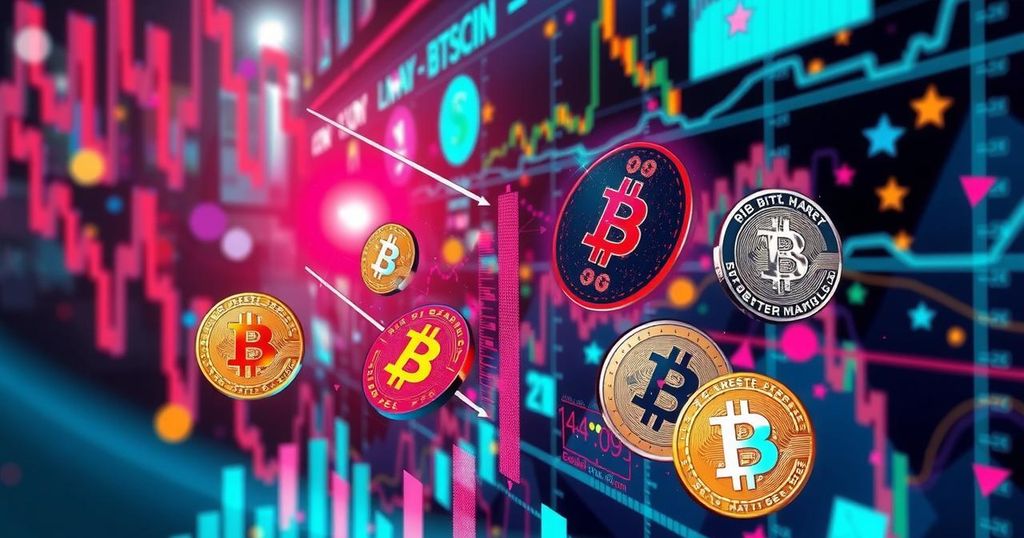Understanding Crypto Price Manipulation and Its Impact
Crypto price manipulation involves deceptive practices to influence market prices, impacting unsuspecting traders. Common tactics include pump-and-dump schemes, whale activity, wash trading, and spoofing. The impact extends beyond individual losses to undermine trust in the entire cryptocurrency ecosystem, prompting calls for stricter regulatory measures. Tools and resources to protect oneself from such manipulation are being developed, aiming to foster a safer trading environment.
In the world of cryptocurrency, price manipulation is a disconcerting trend. Unlike conventional finance, where regulators enforce strict rules, the relatively unregulated crypto space often escapes scrutiny, allowing manipulative tactics to flourish. This behaviour includes artificially inflating or crashing a coin’s value by deceptive practices, influencing unwary traders who aren’t aware of the underlying deceit.
Some common tactics for manipulating crypto markets are emerging as criminals refine their strategies. Take the pump-and-dump scheme, for example. A group buys a low-cap token quietly, then spreads exciting news to attract retail investors. After pushing the prices up, they sell their holdings, resulting in losses for late investors left with devalued assets.
Then, there are the notorious whales – large holders of crypto assets. They can make significant moves that ripple through the market, instilling fear or greed in smaller traders. When a whale trades, many tend to mimic them, thinking there’s insider knowledge at play, which further complicates market stability. Such actions signal a need for caution among general investors.
Another commonly seen manipulation tactic, often on unregulated platforms, is wash trading. Essentially, this involves an individual buying and selling the same asset to create fictitious trading volume, misleading potential investors about the health of a particular token or project. This method can inflate the perceived legitimacy of the token.
Spoofing and layering are two other methods where manipulators use fake orders to mislead other traders into thinking there’s real market interest. Right when genuine traders react, the manipulators cancel their fake orders, effectively pocketing profits while others chase the momentum they engineered.
Behind these more visible scams lie advanced tactics requiring a level of technical expertise. High-frequency trading bots can outpace human traders, executing trades that manipulate prices. Insider trading — acting upon non-public information — is also a recurrent problem in the crypto domain.
Oracles, tools that deliver real-world data to smart contracts, can be hijacked or manipulated. Such exploitation can lead to substantial financial losses and erode trust in critical infrastructure.
The psychological aspect of trading is vital too. Emotions like greed and fear often dictate market behaviour, and this is how scammers operate best. Many throw caution to the wind, diving into investments without proper research, lured by the prospects of substantial gains or scared off by sudden market downturns.
The impact of price manipulation isn’t confined to individual investors. It tarnishes the entire cryptocurrency ecosystem, diminishing trust among participants, especially newcomers. Those who suffer losses may abandon the market altogether, disheartened by what they perceive as an unfair betting game.
Regulatory bodies worldwide are increasingly scrutinising these manipulative behaviours. High-profile scandals may pressure regulators to impose stricter rules, which could stifle innovation in legitimate projects. A continual cycle of scams can overshadow pioneering contributions and valuable technologies.
There are ways to safeguard one’s investments against these manipulative trends. Conduct thorough research before investing in any token. Observing trading volumes and whale activity, using reputable exchanges, and keeping updated with market strategies can help identification of red flags.
On a positive note, steps toward cleaner crypto markets are underway. Exchanges are implementing sophisticated predictive technology to detect manipulation, while blockchain projects enhance transparency and community cooperation. As regulators forge ahead with necessary legislation, the crypto space may soon see improved accountability.
Though the risk may not disappear entirely, vigilance and education empower traders against deception. The more informed you are, the better equipped to make wise investment decisions in a volatile and often confusing landscape.




Post Comment